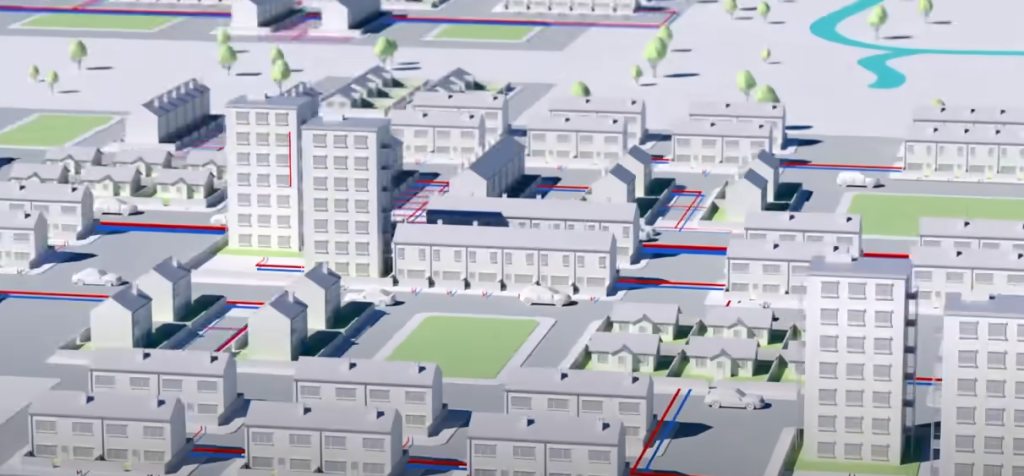
Is Geothermal Heating and Cooling Worth the Cost? Heat Pumps Explained
When building a house, homeowners have several ways to power their heating and cooling systems, including oil, natural gas, or electricity. But there’s another option right beneath our feet: geothermal heating and cooling. Is it worth the cost, and how does it hold up? Let’s dive into the details.
Heating and cooling systems are essential parts of our homes, but they come at a cost. According to the 2021 Annual Energy Outlook from the EIA, space heating represents 15% of total household electricity in the U.S., while space cooling accounts for 16%. Together, they account for about 31% of total electricity use in the country. This varies by region, with natural gas and oil also being major heating fuels. However, geothermal energy, a lesser-known alternative, is gaining traction.

What is Geothermal Heating and Cooling?
Geothermal systems, also known as ground source heat pumps (GSHP), have been around since the 1940s. Initially used for water heating, advancements in technology have expanded their use to electricity generation and heating and cooling. These systems take advantage of the ground’s stable temperature to provide heating and cooling for homes.
A geothermal heating system consists of fluid-filled tube loops that exchange heat with the soil and a heat pump that removes heat from the fluid, concentrates it, and transfers it to the building using ductwork. This process is quite similar to other forced-air heating systems.
How Do Geothermal Systems Work?
During winter, the temperature underground is higher than the surface air. Cool liquid from the house travels down inside the loops, absorbs heat from underground, and brings it back up. The heat pump compresses the liquid, increasing its temperature, which then warms the air circulated around the house. The cooled liquid is pumped back into the ground, continuing the cycle.
In summer, this process reverses. The lower temperature refrigerant absorbs heat from the house, which is then transferred to the ground, and the cooled liquid returns to the house.

Types of Geothermal Systems
Geothermal systems can be categorized into open-loop and closed-loop systems. Open-loop systems use groundwater, which passes through heat exchangers within the heat pump before being discharged back into the ground. These systems are efficient but require careful maintenance and adherence to environmental regulations.
Closed-loop systems, the most common type, have several subcategories:
- Vertical Loops: Require multiple holes drilled vertically into the ground.
- Horizontal Loops: Pipes are placed horizontally in the soil, buried about one to three meters underground.
- Slinky Coil Loops: Coiled tubing saves space but requires more coiling per kilowatt of capacity.
- Pond Loops: Submerged in bodies of water near the house, these systems reduce drilling and digging costs but need deep water to avoid surface temperatures.
Cost and Efficiency
Geothermal heat pumps are sized in tons, with one ton corresponding to 12,000 BTUs. For a typical new American house of 2,300 square feet, a three-ton heat pump (around 11 kW) is usually required. While the upfront cost is high, ranging from $10,000 to $30,000, these systems are highly efficient, achieving a coefficient of performance (COP) from 3 to 5.
Financial Benefits and Incentives
Although the installation cost is higher than traditional HVAC systems, geothermal systems offer significant savings in the long run. They can last over 20 years for the heat pump and around 50 years for the underground infrastructure. Payback periods are typically around 8 to 10 years, with annual savings ranging from $600 to $1,440.
Government policies and incentives can reduce these upfront costs. For example, the U.S. federal residential renewable energy tax credit provides a 30% tax credit on the total installed cost of an Energy Star-rated system. Some states offer additional grants.
Innovations and Future Prospects
Innovations like dual-source heat pumps and smart controls are further improving efficiency and reducing costs. Dual-source heat pumps switch between air and ground sources for optimal efficiency, while smart controls synchronize with the grid to balance supply and demand, reducing running costs.

Geothermal heating and cooling systems offer a sustainable and efficient alternative to traditional systems. While the initial investment is significant, the long-term savings, environmental benefits, and potential incentives make them a compelling choice for homeowners. As technology and policies continue to evolve, geothermal systems are likely to become more accessible and popular.